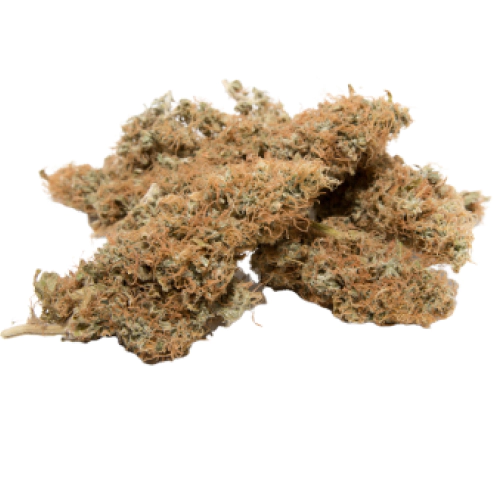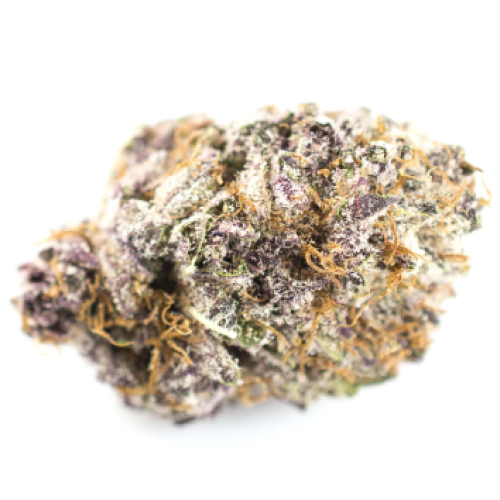THC 14.8 - 16.4%
CBD 0.37 - 0.63%
Effect Creative
Flavor Diesel
17.75 - 22%
0.41 - 0.59%
0.38 - 0.84%
Grape, Berry
Relaxed
Star Pupil strain is believed to be an Indica-dominant hybrid that originated from Thai and Afghani from an unknown breeder. The strain is perfect for all lovers of the classics.
Star Pupil weed has a reputation as a heavy-hitter because of its 15-22% THC content, while CBD level does not exceed 1%. Star Pupil weed strain’s smokers reported such reactions:
These cerebral effects cause a sense of happiness and focus on minor details. The high is accentuated by a light tingle that starts with the lower back and spine. At the end of your journey, you will be completely relaxed, so we recommend smoking it in the evening.
However, you may experience side effects such as:
Star Pupil strain is primarily used in the treatment of conditions such as:
The cannabis contains such terpenes as carene, sabinene, valencene, terpinolene, which ultimately shape its taste. It is often described as spicy with herbal overtones, orange, pretty pungent, even diesel, and a mild peach flavor can be felt on the tip of the tongue.
The difficulty of growing this strain is moderate, however, the yield is not very large, 1-2 oz/ft. The plant can be cultivated indoors and outdoors, the height is 30-60 cm. Its buds delight with their heavy yellow-green nugs with thin orange hairs and purple trichomes. The flowering period is approximately 7-8 weeks.
| THC | Tetrahydrocannabinol, or THC, is a major cannabis chemical compound. It is a psychoactive element that stimulates dopamine release and induces euphoria or happiness. THC-rich strains may be helpful with such conditions as lack of appetite, chronic pains , etc. It is considered to be the primary active marijuana component. | 17.75 - 22% |
| CBD | Cannabidiol, or CBD, is a major compound in cannabis, which is non-psychoactive. It is also proved to counteract the side effects of the second major component THC. CBD is widely used for medicinal purposes in rubs, oils and so on. It is helpful in muscle pain cases, may treat arthritis and migraines. Even Greeks used it against pain, while Queen Victoria applied it to get rid of menstrual cramps. | 0.41 - 0.59% |
| CBC | Cannabichromene, or CBC, is a minor cannabinoid, meaning that its quantity in cannabis is quite little. Though it has the same origin as CBD and THC, it is different in functions. Without any psychoactive effects, it is an efficient cannabis compound in combating acne and depression. CBC produces analgesic, antibacterial and anti-inflammatory effects. | 0.26 - 0.48% |
| CBG | Cannabigerol, or CBG, is one of the minor cannabis compounds in adult plants. On the other hand, young ones contain a lot of this antibacterial and anti-inflammatory component. During the growth, CBG is converted into different cannabinoids, mostly THC and CBD. The compound itself increases appetite and decreases eye pressure. | 0.38 - 0.84% |
| CBN | Cannabinol, or CBN, is a trace element in cannabis that is considered to be mildly psychoactive. It appears from oxidation THC, exposed to light and heat. CBN is mostly contained in old cannabis and in traditional hashish. It is effective against insomnia, bacterial infections and appetite loss. | 0.29 - 0.29% |
| THCV | Tetrahydrocannabivarin, or THC-V, is a compound contained in cannabis in trace amounts. Even though it is close to THC molecularly, it is different in effects. This compound may be psychoactive only in large amounts. THC-V reduces blood sugar, controls appetite, stimulates bone growth, etc. African Sativa strains are the richest in THC-V. | 0.14 - 0.43% |
| Carene | Carene (also known as Delta-3 carene) is a terpene found in rosemary, lemons, pines, and cedars, offering citrusy and cypress aroma. Studies on mice showed that carene provides anti-inflammatory effects, as well as promotes bone health and chronic pain relief. | 0.1% |
| Pinene | Pinene is one of the most widespread terpenes in nature, found in pine trees, basil, nutmeg, parsley, and rosemary. Cannabis containing terpene (alpha-pinene or α-pinene) boasts a strong pine scent. Pinene is responsible for anti-inflammatory, pain-relieving, and anti-anxiety effects. | 0.02% |
| Myrcene | Myrcene (also known as β-myrcene) is one of the most common terpenes found in cannabis, representing more than 20% of the modern marijuana terpene profile. Myrcene has a distinct earthy, musky flavor, resembling cloves. It is responsible for calming and soothing effects of weed. Myrcene is also found in hops, thyme, mango, lemongrass, guava melon. | 0.36% |
| Humulene | Humulene (also known as α-humulene) is one of the major terpenes found in cannabis, contributing to woody, earthy, spicy, herbaceous, and, mainly, floral aromas of cannabis. Used in modern medicine, humulene offers anti-inflammatory, antibacterial, and appetite suppressant effects, which have been well-researched by pharmaceutical companies. | 0.02% |
| Limonene | Limonene (also known as d-limonene) is the second most common terpene in nature and the third most common terpene in cannabis. It has a powerful citrus aroma and can be found in all citruses, including lemons, oranges, grapefruits, limes, juniper, etc. Limonene is known to elevate moods and provide anxiety, depression, and stress relief. | 0.06% |
| Linalool | Linalool (also known as beta linalool, linalyl alcohol, linaloyl oxide, and p-linalool) is one of the rarest terpenes found in cannabis, mostly in small quantities. Linalool is known for its spicy and lavender aroma, bringing relaxation and calming effects. It is also said to provide anti-inflammatory and analgesic properties that can be useful for athletes. | 0.03% |
| Sabinene | Sabinene is a terpene with a peppery, spicy, citrusy, and piney aroma, presented in Norway spruce, Holm oak trees, black pepper, cardamom, and carrot seeds. Found in cannabis in small quantities. Allegedly, sabinene has anti-inflammatory and antimicrobial properties. | 0.28% |
| Valencene | Valencene is a terpene that got its name from Valencia oranges - a fruit where It's initially found. Valencene offers citrusy, sweet aromas, with flavors having notes of oranges, grapefruits, tangerines, and, occasionally, fresh herbs or freshly cut wood. Citrus aromas, frequently found in a wide variety of cannabis strains, are contributed to by valencene, which is known for anti-inflammatory and insect repelling properties. | 0.03% |
| Terpinolene | Terpinolene is one of the most common terpenes found in cannabis; however, It's usually presented in small quantities. Is responsible for piney, floral, herbaceous, and even a little bit citrusy aroma of cannabis. Terpinolene can be found in lilacs, nutmeg, and cumin. In cannabis, terpinolene contributes to the sensation of "freshness." Has the potential to reduce the risk of heart diseases. | 0.06% |
| Caryophyllene | Caryophyllene (also known as beta or b caryophyllene) is a terpene found in many herbs and spices, such as black pepper, basil, rosemary, and oregano. Cannabis high in caryophyllene delivers a strong spicy, peppery aroma, resembling cinnamon and cloves. Caryophyllene offers potent anti-inflammatory and sedative effects. | 0.04% |
| Total terpenes content | 1.00% |
THC 14.8 - 16.4%
CBD 0.37 - 0.63%
Effect Creative
Flavor Diesel
THC 14.5 - 15.5%
CBD 0.19 - 0.55%
Effect Sleepy
Flavor Orange
THC 16.5 - 22%
CBD 0.32 - 0.75%
Effect Talkative
Flavor Skunk

THC 16.4 - 19%
CBD 0.54 - 0.89%
Effect Happy
Flavor Grapefruit
THC 18.2 - 20%
CBD 1.94 - 2.31%
Effect Sleepy
Flavor Citrus

THC 19 - 21%
CBD 0.33 - 0.62%
Effect Sleepy
Flavor Blueberry
THC 13 - 16.67%
CBD 4 - 4.41%
Effect Tingly
Flavor Spicyherbal
THC 17 - 21.5%
CBD 0.05 - 0.22%
Effect Tingly
Flavor Apricot
THC 13 - 15.5%
CBD 0.21 - 0.44%
Effect Euphoric
Flavor Spicyherbal

THC 19.5 - 22%
CBD 0.42 - 0.73%
Effect Happy
Flavor Flowery
THC 18 - 22%
CBD 0.11 - 0.94%
Effect Creative
Flavor Tree fruit

THC 21.33 - 24.67%
CBD 0.43 - 0.77%
Effect Relaxed
Flavor Pungent
Be the first and share your opinion
Write a Review